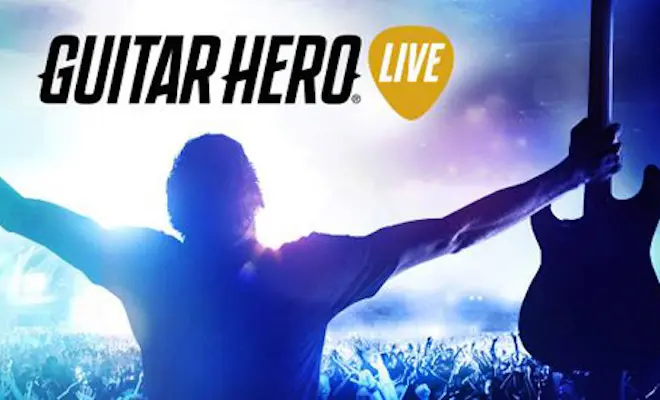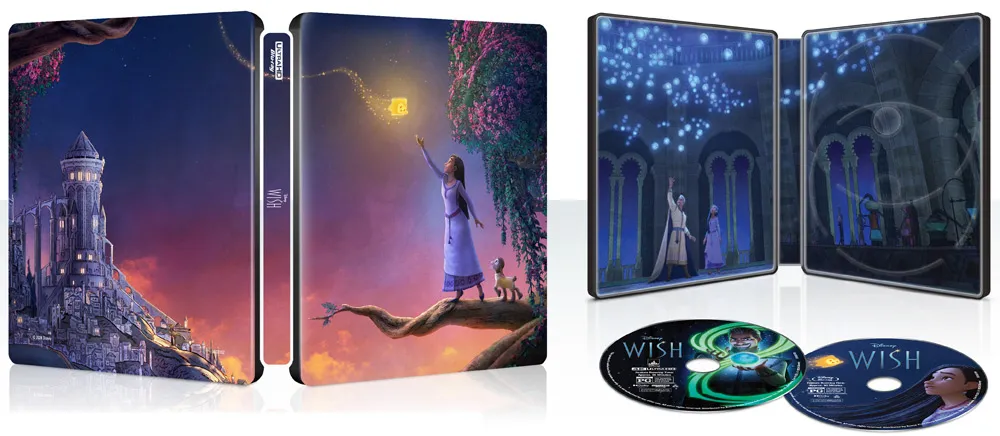I love to imagine myself a rock superstar. I have since I was a kid. It’s second nature when a great song comes on the radio (or Sirius-XM, Spotify, Pandora, Apple Music, etc.) to strum the lower belly and pretend to finger an imaginary fretboard. Or, as I’m prone to do, driving in the car, using the steering wheel as the fretboard, fingering imaginary notes to my favorite songs. And I’m not alone.
Activision, in 2005, capitalized on this with Guitar Hero. It was a rhythm/music game that used a plastic guitar with colored buttons that a player could press in accordance to the notes on screen — usually during a popular/licensed song. Guitar Hero started an entire genre that paved the way for the Rock Band franchise a few years later. But then the series and the genre both started to become stale. Saturation of different kinds of instruments was the beginning of the end. We had Guitar Hero and its sequels, then Rock Band and its sequels, then DJ Hero, and it truly got our of hand. Had the genre not stopped altogether, I’m confident we were only a generation way from Ukelele Hero and Didgeridoo Hero, as by the end, fatigue had set in and homes were littered with fake plastic instruments — most broken in some way — and the well had dried up.
But now, five years after the last incarnation, Guitar Hero is back with a new developer (FreeStyleGames, who created the DJ Hero franchise), a whole new guitar controller, and a new mode that will forever change how music/rhythm games are played going forward.
Guitar Hero Live is not a sequel, but a rebirth. About the only things the same from previous versions are the fake plastic guitar and licensed songs. The interface was completely redone, doing away with simple, boring note highways and the occasional image of a cartoony player. In Guitar Hero Live, the main mode (simply called Live) allows the player to join a band playing one of two festivals, one in the U.S., and one in the U.K. Each band plays a static setlist of songs and completing the set unlocks other bands in that festival, as well as the songs from that setlist to be played in free mode.
The difference here is that the bands are all done in the POV of the actual guitar player with real human beings in the band — and in the stands. It puts the player right into the action of a real concert, with real bandmates. Now when you mess up, you not only get booed by real faces, but your band will call you out, and the audience will throw beverages on you, and hold up unflattering signs. This actually works to create a type of synergy with the fans and your bandmates. Yes, it’s not real, and they are all actors, but the illusion of them being real human beings works to set you in the moment. During an early set on the U.S. tour, I was struggling on a song and the fans were booing. What made matters worse was when my hot bass player walked over to me on stage and yelled in my face, “what’s wrong with you!?” I didn’t want to fail her — or the fans — and suddenly, Guitar Hero Live became more than a silly rhythm game. It became…real. Kind of.
The Live mode is a very welcome change to the genre and it works very well to build that illusion of rock stardom. I didn’t find it silly (as it may sound) and I much preferred playing this way than by using cartoony player-designed characters.
Another new feature of Guitar Hero Live is the guitar controller itself. As I mentioned in my hands-on preview, FreeStyleGames has done away with the colored buttons on the neck and replaced them with six buttons — two rows of three buttons each, sitting on top of one another. This means that players will have to finger the fretboard much more like a real player and not just stoke the neck, tapping buttons and matching colors to what’s on the screen. Now, Guitar Hero Live is a video game, and not a real music simulator, so of course the controller is not going to be just like a real guitar. But in GH Live, its as close as it has ever been, and — like the live action stage interactions, help create the illusion of rock stardom. And it does so incredibly well.
But as cool as the Live mode and the new guitar are, and how they make Guitar Hero Live an epic rebirth of a classic game game series, the true wonder of Guitar Hero Live comes in the brand new mode: GHTV.
Guitar Hero TV is a living breathing music channel — think MTV in the 1980s and early 90s — but the rub here is that you can play on any song that comes on. Any. Song. And instead of being booed off the stage for screwing up (and you will screw up, as the difficulty level here is set very high), you are scored on what you can do, not what you are supposed to do. That score is then set on a world-wide leaderboard of other players. This — on the surface — creates an online multiplayer component. But there is so much more.
The channel randomly selects songs to play and it costs absolutely nothing to jump on and play the random songs. But there is also a way to personally select the songs you want to play, using tokens. Tokens can be purchased with in-game currency earned by playing both modes, or the in-game currency can be purchased with real money. The option is there, but spending real money is only an option. In my time playing the game, GHTV has given me plenty of tokens to use as I see fit, so I’ve never needed to think about paying real money. I can create a playlist of seven to 10 songs of my choosing from the extensive list, and play my heart out (or until my hand cramps up).
Also as part of GHTV, vocals have been added using a standard USB microphone. The singer’s score doesn’t work to “save” the guitarist, as there is no saving in GHTV, but the score is added to the overall total, which helps on the leaderboards. This addition also lets more people enjoy playing, with the guitar controller and mic being passed around between a group of friends. The vocals are not part of GH Live, as the band already has a singer (who will yell at you for missing notes), but the inclusion here in GHTV adds to the party atmosphere.
Speaking of, FreeStyleGames and Activision have even created a “party” option in GHTV, where players can pay a one-time fee of $5.99 and get unlimited access to everything for 24 hours. This is perfect for get-togethers with friends, or planned all-night jam sessions in the dorm room. Again, paying real money is only an option, and I keep saying this as GHTV has been the point of confusion since it was announced.
The interface of GHTV is the actual song’s original music video. For younger folks, music videos were short films created to accent the song and ran on a few cable channels dedicated to these “music videos.” There are no pregnant teens, or “reality” shows starring good-looking 20-somethings, or funny clip shows hosted by ex-skaters here. Just music videos. And the initial song selection is incredibly stout, with new content to be added constantly. And just like a living, breathing network, the show goes on, whether you are playing or not. You can jump in and play the last few bars of Faith No More’s “Epic,” and then start the next song, let’s say, Haim’s “The Wire,” and then jump back out and continue playing in menus, working on building playlists, checking out rankings, or designing the most kick-ass player card imaginable. And if a song comes on that you like and want to play, press the button to opt in and get going. No load screens, no waiting; just rocking and rolling.
I’ve spent a good portion of time playing the GHTV mode and I still feel that there is more as it is always changing and for the better. This is a living, breathing game mode that gives players the opportunity — and choice — to play more music than ever before, on any platform. And that, my friends, is a true game changer.
Guitar Hero Live is a complete reinvention of a solid idea that took the world by storm a decade ago and is poised to do so again. Almost everything has been changed here –and for the better — and GHTV is a veritable dream come true for fans of music, rhythm games, and rock and roll. The new guitar controller and the real-life, on-stage, POV images sets this game apart from its contemporaries by miles. This is what it means to rock. And Guitar Hero Live delivers in every way.
Guitar Hero Live is available now for the PlayStation 4, PS3, Xbox One, Xbox 360, and Wii U. It comes with both a single guitar and dual guitar bundle option. This review is based off the Xbox One version of the game, provided by Activision.



